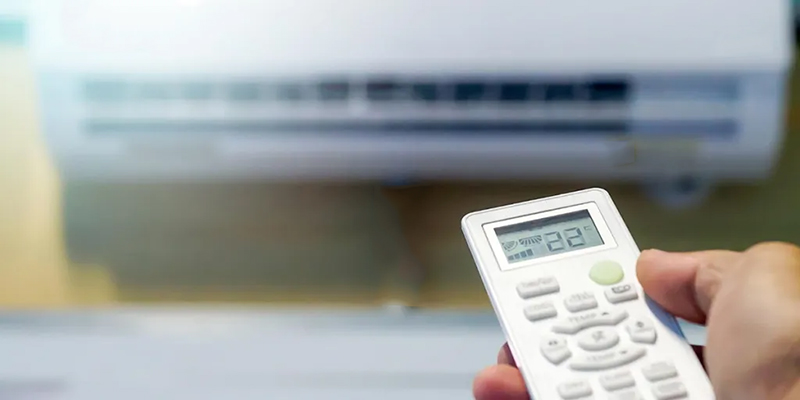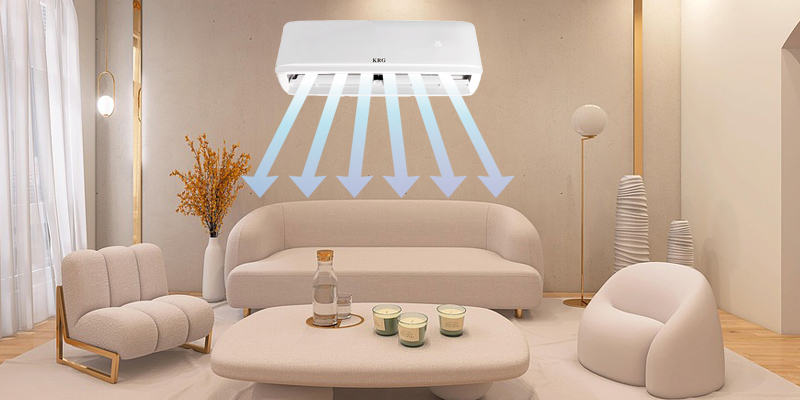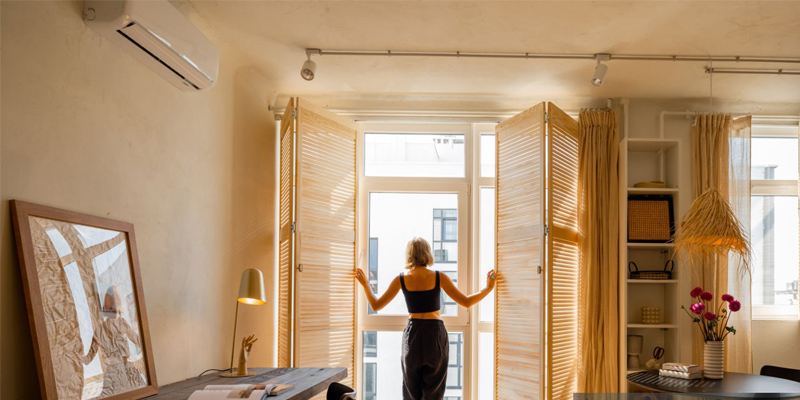Getting more tired under air conditioning? There are 3 details you may missed
When we are enjoying the coolness from the air conditioners, many people always feel tired and have headaches and even soreness in the joints. Such "air condition syndrome" does not occur occasionally. It deeply relates to the operation details of the air conditioners. Here are three key points demonstrated from scientific research with their applicable solutions.
I. Temperature setting: Pursuing a "sudden cold sensation" may harm the body.
Misconception: Lowering the temperature blindly.
Many of us set a temperature of 22℃ or even lower, which we think could quickly decrease the temperature. In fact, when the temperature difference exceeds 8-10°C between indoor and outdoor environments, our blood vessels will contract violently due to sudden temperature changes. It will block the blood circulation and cause symptoms like headache and muscle stiffness.

Solution:
- Set a temperature of 26-28°C in summer: This temperature period could ensure comfort, reduce the burden on the compressor, and cut down 30%+ energy consumption.
- Set a temperature of 20-22°C in winter: With the EA heating function, it could avoid excessive drying.
- Set an ECO (sleeping) mode during the night: According to the human body temperature rhythm, the air conditioning units could increase 1-2 °C automatically to reduce stimulation.
II. Airflow direction: Invisible damage caused by direct cold air blowing.
Misconception: Wind blowing directly at people.
Being exposed to the direct cold air blowing for a long time, the temperature of partial skin could suddenly reduce 5-7 ℃, which could lead to lower back pain, shoulder periarthritis, and other issues. What's worse, cold air would stimulate the respiratory mucosa, decreasing our immunity.

Optimization:
- Air outlet faces upward when cooling: Utilizing the sinking feature of the cold air to form a natural circulation, it could increase 40% cooling efficiency compared with blowing directly.
- Air outlet faces downward when heating: The hot air could rise quickly to cover the whole room.
- Adopt a fan: A fan assists the airflow in a low-speed mode, reducing 2-3°C of the body temperature and 15 % of the air conditioner's energy consumption.
III. Air quality: the “hypoxia trap” in confined spaces.
Hidden danger: the vicious cycle of continuous closed windows.
Experiments have shown that after being sealed for 3 hours in an air-conditioned room, the concentration of carbon dioxide can reach 1500 ppm (normal value of 400 ppm), and the decrease in oxygen content leads to drowsiness and decreased attention. What's even more dangerous is that the dust and mold accumulated on the air conditioning filter can cause respiratory diseases.

Coping strategy
- Open the window in the first 10 minutes when air conditioning. This is to exhaust the remaining pollutants inside of the machine.
- Ventilate for 15 minutes every 3 hours: This will help reduce the carbon dioxide concentration through air convection.
- Place a basin with water or a humidifier in the air-conditioned room: this will keep indoor humidity at 40%-60%, reducing dry eyes and itchy skin.
Advanced improving solutions
- Installation height calibration: The installation height should be 1.7 meters to avoid direct cold wind blowing on the head or feet.
- Deep cleaning of filter: Cleaning the filter every month can improve cooling efficiency by 20% and reduce bacterial growth by more than 50%.
- New air conditioning technology: Some new air conditioners use an external circulation ventilation system to bring fresh outdoor air into the room, effectively improving the indoor air quality and achieving an energy-saving effect of about 40%, taking into account both health and environmental protection.
Write in the end
To use an air conditioner properly, we should balance these three main factors: temperature, airflow, and air quality. Next time, before we use the air conditioner, we may adjust the wind direction, set a fundamental temperature of 26°C, and open the window regularly for ventilation. Those changes to the details could not only relieve our tiredness but also cut down 20%-30% of electricity bills.
Please note: True coolness should not come at the expense of your health.
Appendix: Self inspection Form for Air Conditioning Usage
✅ Is the temperature set in the range of 26-28℃?
✅ Is the air outlet away from direct airflow to the human body?
✅ Is the ventilation done every 3 hours?
✅ Is the filter cleaned?
✅ Is it used with a fan?